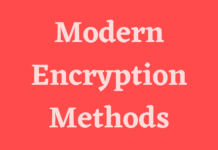Analysts gave an account of Monday that programmers are presently abusing Google’s Analytics administration to covertly appropriate Mastercard data from contaminated web based business locales.
As indicated by a few free reports from PerimeterX, Kaspersky, and Sansec, danger entertainers are presently infusing information taking code on the undermined sites in blend with following code produced by Google Analytics for their own record, letting them exfiltrate installment data entered by clients even in conditions where content security strategies are implemented for most extreme web security.
“Assailants infused malignant code into destinations, which gathered all the information entered by clients and afterward sent it through Analytics,” Kaspersky said in a report distributed yesterday. “Accordingly, the aggressors could get to the taken information in their Google Analytics account.”
The cybersecurity firm said it found around two dozen contaminated sites across Europe and North and South America that worked in selling computerized hardware, beautifying agents, food items, and extra parts.
Bypassing Content Security Policy
The assault depends on the reason that online business sites utilizing Google’s web investigation administration for following guests have whitelisted the related spaces in their substance security strategy (CSP).
CSP is an additional safety effort that identifies and relieve dangers originating from cross-site scripting vulnerabilities and different types of code infusion assaults, including those grasped by different Magecart gatherings.
The security include permits website admins to characterize a lot of areas the internet browser ought to be permitted to associate with for a particular URL, along these lines forestalling the execution of untrusted code.
charge card hacking
“The wellspring of the issue is that the CSP rule framework isn’t sufficiently granular,” PerimeterX’s VP of exploration Amir Shaked said. “Perceiving and halting the above malevolent JavaScript demand requires propelled perceivability arrangements that can recognize the entrance and exfiltration of touchy client information (for this situation, the client’s email address and secret word).”
To gather information utilizing this method, all that is required is a little bit of JavaScript code that transmits the gathered subtleties like certifications and installment data through an occasion and different boundaries that Google Analytics uses to exceptionally distinguish various activities performed on a site.
“Executives compose *.google-analytics.com into the Content-Security-Policy header (utilized for posting assets from which outsider code can be downloaded), permitting the support of gather information. Additionally, the assault can be executed without downloading code from outer sources,” Kaspersky noted.
To make the assaults progressively clandestine, the assailants likewise find out if engineer mode — an element that is regularly used to spot arrange solicitations and security mistakes, in addition to other things — is empowered in the guest’s program, and continue just if the aftereffect of that check is negative.
A “Novel” Campaign Since March
In a different report discharged yesterday, Netherlands-based Sansec, which tracks computerized skimming assaults, revealed a comparative battle since March 17 that conveyed the malevolent code on a few stores utilizing a JavaScript code that is facilitated on Google’s Firebase.
For obscurity, the on-screen character behind the activity made a transitory iFrame to stack an aggressor controlled Google Analytics account. The charge card information entered on installment structures is then scrambled and sent to the examination reassure from where it’s recuperated utilizing the encryption key prior utilized.
Given the across the board utilization of Google Analytics in these assaults, countermeasures like CSP won’t work if aggressors exploit a previously permitted space to commandeer touchy data.
google investigation
“A potential arrangement would originate from versatile URLs, including the ID as a major aspect of the URL or subdomain to permit administrators to set CSP decides that confine information exfiltration to different records,” Shaked finished up.
“An increasingly granular future course for reinforcing CSP bearing to consider as a component of the CSP standard is XHR intermediary authorization. This will basically make a customer side WAF that can implement an approach on where explicit information field[s] are permitted to be transmitted.”
As a client, lamentably, there isn’t a lot of you can do to defend yourself from formjacking assaults. Turning on designer mode in programs can help when making on the web buys.
In any case, it’s fundamental that you keep an eye out for any occasions of unapproved buys or wholesale fraud.





![[HINDI] What is DoS attack and DDoS attack?](https://bittentechsolutions.in/wp-content/uploads/2020/04/ddos-218x150.jpg)
![[HINDI] What is juice jacking? Think twice before using public USB ports](https://bittentechsolutions.in/wp-content/uploads/2020/04/juice-jacking-risk-1200x675-1-218x150.jpg)










